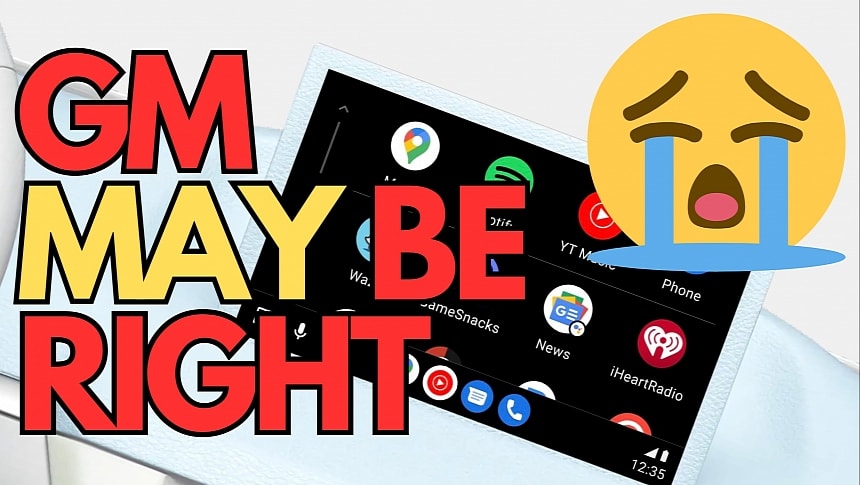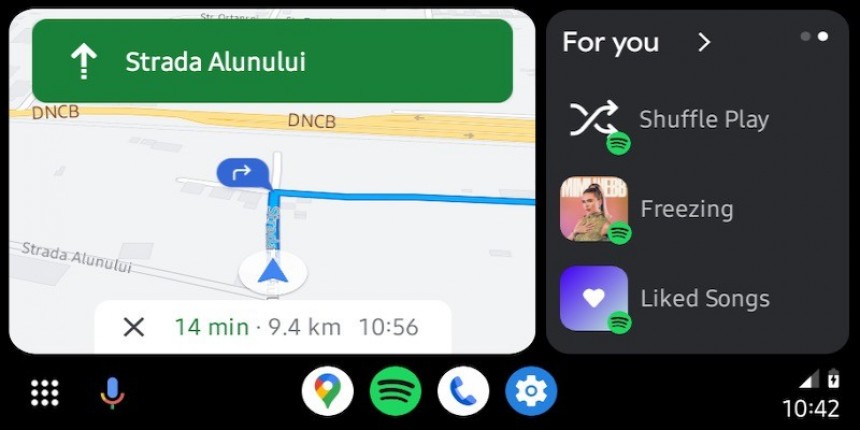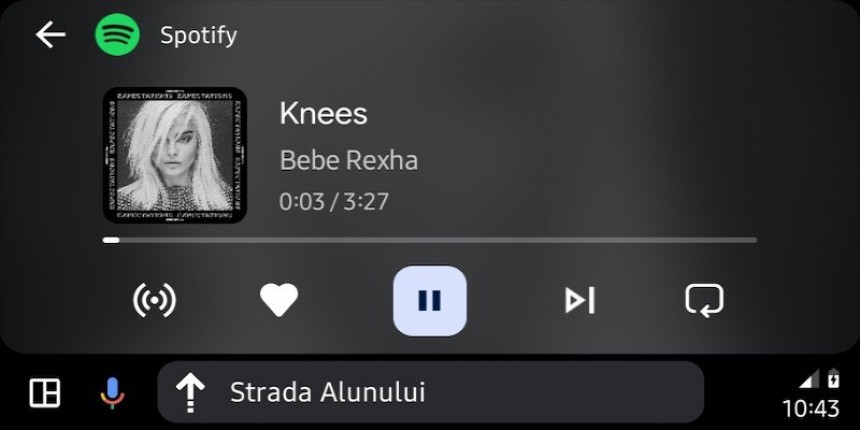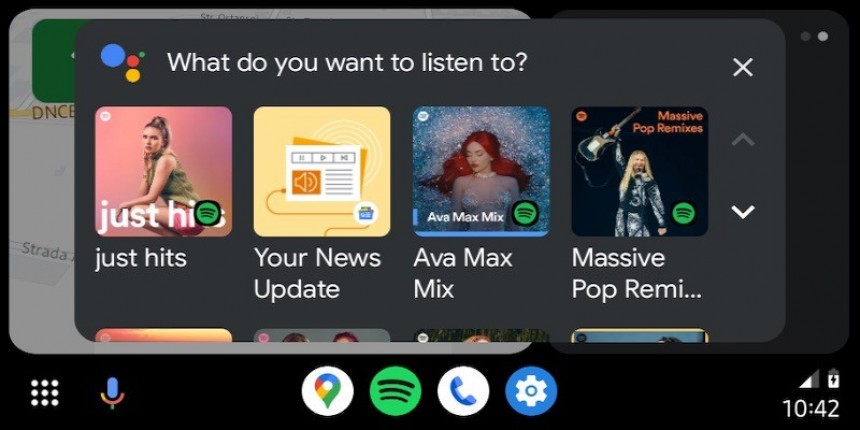While I admit this could become a controversial piece, let me tell you one thing from the very beginning: I don't agree with GM's reasoning for dropping Android Auto and CarPlay, I don't believe this is what customers want, and I certainly don't think that the days of these two systems are numbered.
GM is making a huge mistake by blocking them in its cars, and going all-in on Android Automotive could eventually backfire and push customers (at least part of them) to competing brands.
However, I recently found out that General Motors was right, at least in one aspect, about Android Auto and CarPlay.
The American carmaker has tried all kinds of strategies to defend its controversial decision to block Android Auto and CarPlay. While its long-term goal is to turn the infotainment system into a money-making machine, GM can't admit it. It uses various approaches to convince people that going all-in on Android Automotive is the right approach. Some of its attempts were ridiculous and embarrassing.
Last December, Tim Babbitt, GM's head of product for infotainment, explained in an interview that one of the reasons for dropping Android Auto and CarPlay is the overall safety level offered by these two systems.
Specifically, Babbit explained that Android Auto and CarPlay regularly hit bugs, including connection issues, that give drivers no option but to pick up the mobile device. Sure enough, criticizing Android Auto and CarPlay for bugs is a lazy effort and could even upset Google and Apple, both GM's partners.
But anyone who has used Android Auto for more than a couple of days knows that connectivity bugs are common in this world. However, it doesn't mean all users have the same experience, and Google isn't working on improving the app's stability and reliability. Not allowing Android Auto and CarPlay in a car blocks customers from using the two apps even if they end up offering a 100% flawless experience.
However, my Uber driver just proved that GM's theory (because that's exactly what it is, a theory that the company admitted it didn't test) was right.
As we were heading home earlier today, my Uber driver, who was running Waze on Android Auto to get traffic information for the suggested route, hit a mid-drive disconnection caused by a random bug (I didn't see what triggered the disconnecting, but Android Auto closed unexpectedly when the car was in motion).
The driver noticed the disconnect, and he was still driving (so the car was still in motion), he picked up the phone, looked at it several times to have his fingerprint scanned to unlock it, and tried to plug it back in to relaunch Android Auto. Based on how quickly he reacted, I believe it wasn't the first time he encountered the error, as if he knew precisely what to do to resolve the glitch.
Oddly, Android Auto did not relaunch on the first attempt, so he tried to restart his phone. Again, he took his attention from the road and looked at the phone to initiate the reboot. The device was no longer plugged in, so when Android reloaded, he looked at the phone one more time to plug it in.
In a couple of minutes, Android Auto got him so distracted that he almost missed a turn, not to mention that he barely looked at the road while he was trying to relaunch the app.
General Motors has no excuse for blocking Android Auto and CarPlay, but claiming that these two systems can sometimes do more harm than good, especially when these connection problems occur, isn't as ridiculous as it sounds. Imagine the same bug happens several times a day, and the driver must reboot their smartphone repeatedly to relaunch Android Auto and CarPlay.
GM claims that an embedded system that does not require a mobile device to run offers a safer experience. It's probably right, though giving customers the choice is far more important than enforcing what you believe works for everybody.
If Android Auto doesn't work correctly, that's okay; users can always switch to Android Automotive. If it works as expected, why not allow the driver to stick with it and feel more comfortable driving your car?
General Motors still can't find a good reason for not allowing all systems in its cars – as a reminder, Android Automotive supports Android Auto and CarPlay, so GM can enable all three options – but this safety argument seems to make sense. It doesn't do for everybody, and a responsible driver wouldn't start messing with their phone when the vehicle is in motion. However, an Uber driver can't afford to pull over every time Android Auto shuts down unexpectedly, so if a more stable and reliable alternative exists, they'll probably adopt it in a second. Forcing them to do it could backfire, and that's precisely what seems to happen today due to GM's poorly planned transition to Android Automotive.
However, I recently found out that General Motors was right, at least in one aspect, about Android Auto and CarPlay.
The American carmaker has tried all kinds of strategies to defend its controversial decision to block Android Auto and CarPlay. While its long-term goal is to turn the infotainment system into a money-making machine, GM can't admit it. It uses various approaches to convince people that going all-in on Android Automotive is the right approach. Some of its attempts were ridiculous and embarrassing.
Specifically, Babbit explained that Android Auto and CarPlay regularly hit bugs, including connection issues, that give drivers no option but to pick up the mobile device. Sure enough, criticizing Android Auto and CarPlay for bugs is a lazy effort and could even upset Google and Apple, both GM's partners.
But anyone who has used Android Auto for more than a couple of days knows that connectivity bugs are common in this world. However, it doesn't mean all users have the same experience, and Google isn't working on improving the app's stability and reliability. Not allowing Android Auto and CarPlay in a car blocks customers from using the two apps even if they end up offering a 100% flawless experience.
As we were heading home earlier today, my Uber driver, who was running Waze on Android Auto to get traffic information for the suggested route, hit a mid-drive disconnection caused by a random bug (I didn't see what triggered the disconnecting, but Android Auto closed unexpectedly when the car was in motion).
The driver noticed the disconnect, and he was still driving (so the car was still in motion), he picked up the phone, looked at it several times to have his fingerprint scanned to unlock it, and tried to plug it back in to relaunch Android Auto. Based on how quickly he reacted, I believe it wasn't the first time he encountered the error, as if he knew precisely what to do to resolve the glitch.
Oddly, Android Auto did not relaunch on the first attempt, so he tried to restart his phone. Again, he took his attention from the road and looked at the phone to initiate the reboot. The device was no longer plugged in, so when Android reloaded, he looked at the phone one more time to plug it in.
In a couple of minutes, Android Auto got him so distracted that he almost missed a turn, not to mention that he barely looked at the road while he was trying to relaunch the app.
GM claims that an embedded system that does not require a mobile device to run offers a safer experience. It's probably right, though giving customers the choice is far more important than enforcing what you believe works for everybody.
If Android Auto doesn't work correctly, that's okay; users can always switch to Android Automotive. If it works as expected, why not allow the driver to stick with it and feel more comfortable driving your car?
General Motors still can't find a good reason for not allowing all systems in its cars – as a reminder, Android Automotive supports Android Auto and CarPlay, so GM can enable all three options – but this safety argument seems to make sense. It doesn't do for everybody, and a responsible driver wouldn't start messing with their phone when the vehicle is in motion. However, an Uber driver can't afford to pull over every time Android Auto shuts down unexpectedly, so if a more stable and reliable alternative exists, they'll probably adopt it in a second. Forcing them to do it could backfire, and that's precisely what seems to happen today due to GM's poorly planned transition to Android Automotive.


















